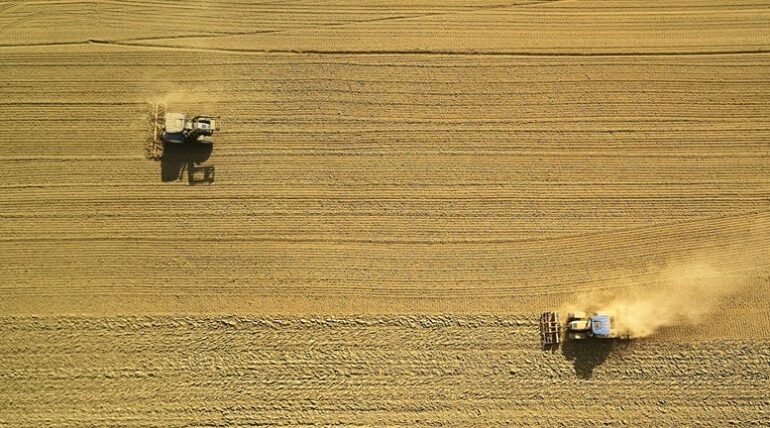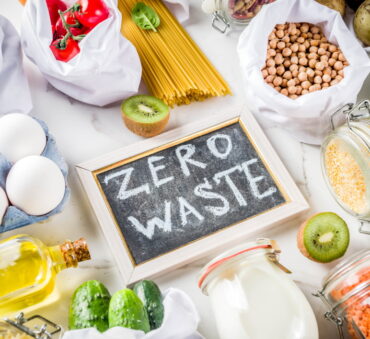Food waste is a global issue that requires enhanced awareness, increased collaboration, and innovative solutions to minimize its effects. While every stage of the supply chain plays a role, food waste from farms is a large contributor, accounting for 16% of all food waste in the United States.
In 2022 alone, farming generated 14.9 million tons of surplus produce, of which more than 80% was left behind in the fields and never harvested. Of this, only 1.6% was donated for hunger relief, demonstrating the missed opportunities and inefficiencies at the farming level.
These shocking food waste statistics highlight the critical need for reducing food waste on farms. For a comprehensive understanding of this topic, keep reading to learn why food gets wasted on farms and how to reduce food waste in agriculture.
Key Takeaways
- Food waste on farms is generated due to overproduction, strict cosmetic standards, economic factors like market volatility and cost of labor, weather conditions, pests and diseases, and storage and transportation issues.
- To reduce food waste on farms, improved demand forecasting, flexible market standards, enhanced harvesting techniques, Integrated Pest Management strategies, infrastructure improvements, educational programs, and biomass conversion can all be explored.
- There are multiple government initiatives to help businesses reduce food waste, including educational campaigns and incentives to encourage food donation and waste reduction efforts. By providing farmers with access to resources and knowledge, government policies assist the agricultural industry in implementing more sustainable approaches, reducing waste, and enhancing overall productivity.
- Food waste management companies help reduce farming food waste by providing companies with tailored solutions to their unique needs. By implementing innovative strategies and leveraging advanced technology, companies can minimize the consequences of food waste.
Understanding Food Waste on Farms
To improve farm waste management, businesses must understand what constitutes food waste on farms. This includes:
- Pre-harvest losses: Pre-harvest losses occur before harvesting begins and can be caused by a variety of factors, including weather-related losses and pest and disease damage. While some pre-harvest losses are expected, improper farming techniques and infrastructure contribute to the issue, leading to large amounts of waste at this stage.
- Harvesting losses: Inefficient harvesting practices can lead to waste generation, which may include premature harvesting, improper handling, mechanical damage, and labor shortages.
- Post-harvest losses: Post-harvest loss involves food waste that occurs across the food supply chain, from harvest up until it reaches consumers. That said, post-harvest loss at the agricultural level often includes losses due to poor handling, storage, and transportation.
- Unsellable produce: Unsellable produce are products that cannot be sold in the market, often due to overproduction, cosmetic imperfections, and damage that makes them unfit for sale. Since large amounts of unsellable produce are still edible, businesses that are committed to managing food waste in a more sustainable way should prioritize donation efforts to minimize landfill use and provide food to those in need.
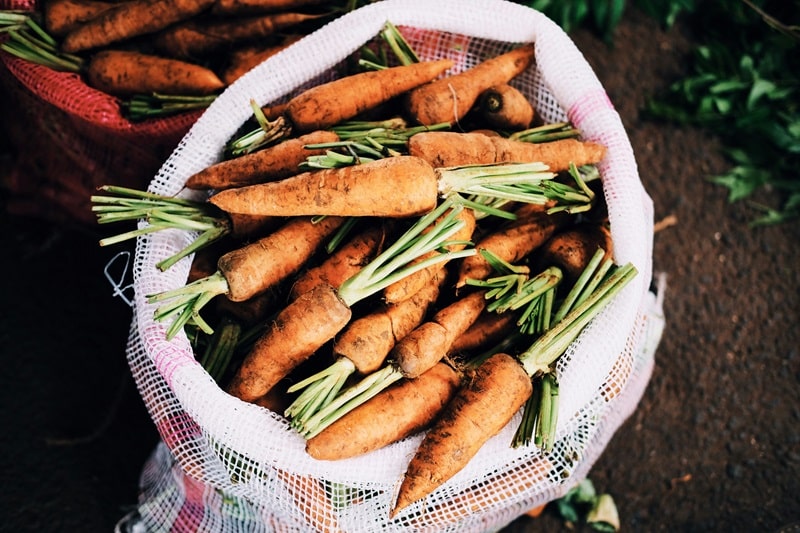
Why Does a Lot of Food Get Wasted on Farms?
Food waste on farms is generated due to overproduction, strict cosmetic standards, economic factors like market volatility and cost of labor, weather conditions, pests and diseases, and storage and transportation issues. Keep reading to explore each of these components in more detail.
Overproduction at Farms
Overproduction is a huge driver of waste, leading to severe environmental, economic, and social consequences. A primary reason why overproduction causes food waste is that farmers often produce more than the market demands to buffer against the unpredictability of weather conditions, crop diseases, pest infestations, and imperfect produce. This ensures that they have enough produce to meet contractual obligations even if part of the crop is lost.
Government policies and subsidies also contribute to the problem, often incentivizing farmers to produce more crops than required. The USDA’s Price Loss Coverage and Agricultural Risk Coverage programs, for instance, provide financial protection to farmers from substantial drops in crop prices or revenues. These policies, unfortunately, can encourage overproduction by incentivizing farmers to grow certain crops regardless of demand.
Market Standards and Consumer Preferences
High aesthetic standards for fruits and vegetables cause large amounts of waste to be discarded throughout the supply chain. At the farm level, farmers must comply with strict cosmetic standards imposed by retailers, as produce is often rejected based on size, shape, and color rather than nutritional value. These standards are enforced at every stage of the supply chain, with consumers showing preference for perfect-looking fruits and vegetables. To achieve widespread acceptance of imperfect produce, changes in consumer expectations, retail standards, and farming practices are required, showcasing the multifaceted challenges associated with ugly produce contributing to food waste.
Economic Factors
There are multiple factors that affect a farmer’s profitability, including market volatility, transportation issues, and high labor costs for handpicked crops. All these factors lead to high production costs, making it unprofitable for some farmers to invest in labor and transportation. When the cost of harvesting, processing, and transporting crops exceeds the revenue they would generate, it causes farmers to leave crops in the field, contributing to large amounts of farming food waste. According to a study on on-farm food loss in northern and central California, 33.7% of edible produce remained unharvested in the fields.
Weather Conditions and Challenges
Extreme weather conditions, such as heavy rain, drought, and early frosts, can disrupt harvesting schedules and lead to crop loss. These unpredictable weather conditions and delays in harvesting can reduce crop quality, increase the risk of disease and rot, and lead to yield losses. Current harvesting machinery also faces multiple limitations, particularly for delicate crops that require manual harvesting, further complicating waste reduction efforts.
Innovations in technology aim to address these issues, with precision agriculture, AI-driven machinery, and advancements in weather prediction technologies all providing a potential solution to food waste in agriculture.
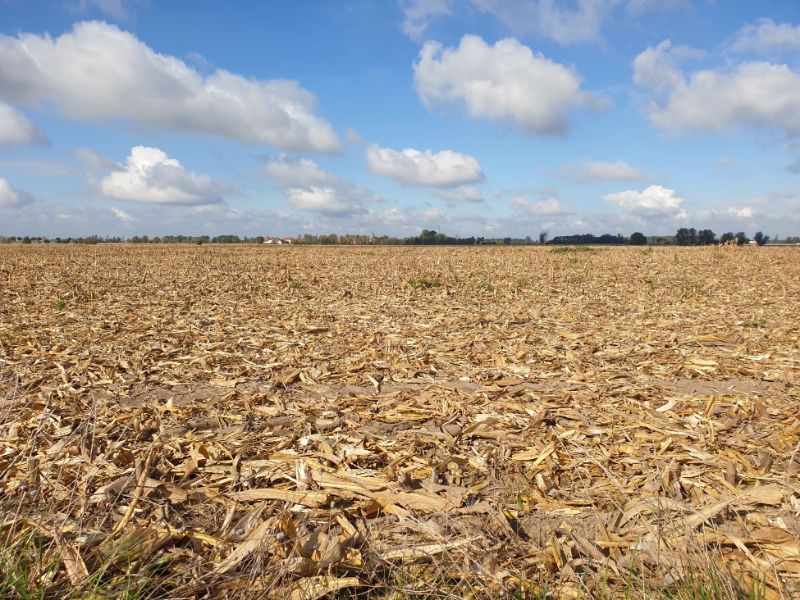
Pest and Disease Losses
Between 20% to 40% of global crop production is lost to pests annually, with plant diseases costing the global economy around $220 billion and invasive insects around $70 billion each year. To address such significant losses, innovative solutions are required to reduce the impact of pests, both in the field and in storage. Preventative measures include Integrated Pest Management strategies, crop rotation, the use of resistant crop varieties, and improved storage solutions. Since these solutions require resources, knowledge, and careful planning, government assistance is required to improve sustainability in the agricultural sector.
Storage and Transport Issues
Improper storage and transportation are both large contributors to food waste in farms. Typically, inadequate temperature and humidity control are the common causes of spoilage and loss during storage, especially for perishable items. Food waste during transportation, on the other hand, is often due to delays, a lack of refrigeration, and damage during transit. To reduce food waste at these stages, improved transportation logistics and increased access to proper infrastructure and refrigeration are required.
How to Reduce Food Waste in Agriculture
To reduce food waste on farms, improved demand forecasting, flexible market standards, enhanced harvesting techniques, Integrated Pest Management strategies, infrastructure improvements, educational programs, and biomass conversion can all be explored.
Improved Forecasting and Planning
Improved demand forecasting helps align production with changing market requirements, therefore reducing waste and improving resource utilization. Big data analytics and AI in food management have emerged as innovative solutions to overproduction, using predictive analytics to analyze large amounts of data to predict future trends and events. This allows farmers to adjust their production levels accordingly.
Flexible Market Standards
To reduce the amount of waste associated with imperfect produce, there needs to be a shift in strict market standards. Educational campaigns like Ugly Produce is Beautiful are key to raising awareness and encouraging consumers to purchase produce of all shapes and sizes. There are also companies like Hungry Harvest that work with farmers to rescue produce that would otherwise be wasted, helping reduce the environmental impact of food waste and making produce more accessible to a wider audience. That said, while there have been improved efforts to reduce the effects of ugly produce, increased collaboration, initiatives, and policies are required to promote the sale and purchase of imperfect produce.
Enhanced Harvesting Techniques
Advanced harvesting technologies and practices help farmers reduce waste at the source, with automated harvesting robots, precision agriculture tools, and improved harvesting machinery making huge strides towards reducing food waste on farms. AI-powered tools have proven to be an important component of modern technology, allowing farmers to analyze crop data and optimize harvesting processes. Campaigns can also be leveraged to enhance farmer education, providing valuable information about proper handling, storage, and harvesting techniques.
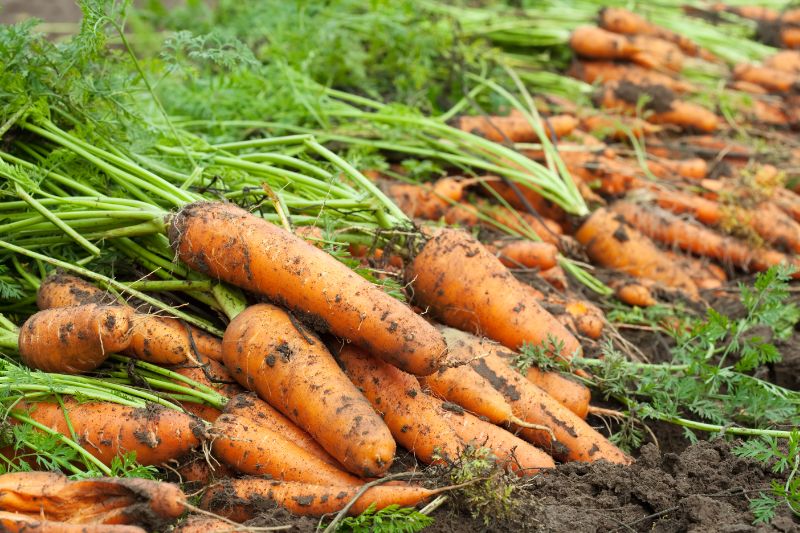
Integrated Pest Management (IPM)
Integrated Pest Management is a series of pest management evaluations, decisions, and controls that focus on the long-term management and prevention of pests. This may include rotating between different crops, selecting pest-resistant varieties, and planting pest-free rootstock. While this method utilizes various techniques, the overall goal is to prevent pests from becoming a threat, therefore reducing food waste on farms.
Infrastructure Improvements
By implementing advanced infrastructure, such as refrigerated storage and better transportation networks, farmers can prevent spoilage and extend the shelf life of produce, therefore reducing food waste in agriculture. There are multiple government initiatives and policies that provide farmers with valuable resources to improve post-harvest management. The National Institute of Food and Agriculture, for instance, invests in and supports initiatives that ensure the long-term viability of agriculture.
Educational Programs
Educational programs help farmers develop new skills and improve their knowledge of sustainable farming practices, thus reducing waste at the production level. Educational campaigns can cover anything from best practices for reducing waste to tips for implementing new technology. In addition to enhanced awareness, these programs can also facilitate collaboration between farmers and nonprofits, retailers, and government agencies, fostering long-lasting relationships that improve comprehensive food waste reduction strategies.
Biomass Conversion
While reducing waste at the source should be the top priority, turning waste into biogas is a sustainable solution that reduces greenhouse gas emissions and generates renewable energy. As businesses are increasingly using a circular economy to fight food waste, comprehensive biochar solutions are more important than ever. Companies like Shapiro provide end-to-end biochar services that streamline processes and contribute to environmental sustainability, therefore enhancing agricultural productivity.
Government Policies Supporting Waste Reduction Efforts
There is multiple government initiatives to help businesses reduce food waste, including educational campaigns and incentives to encourage food donation and waste reduction efforts. The EPA’s SMM Program and the Farm to Food Bank Project are two great examples of this.
The EPA’s SMM Program provides grants for innovative projects aimed at reducing food waste across the supply chain, therefore fostering technological innovation and improving supply chain efficiency to minimize waste. The Farm to Food Bank Project, on the other hand, allocates funds to harvest and transport unharvested and unprocessed agricultural commodities, which are then donated to food banks. In addition to reducing the environmental impact of food waste on farms, this program provides food to individuals in need, making it a valuable approach to minimizing the effects of food waste.
By providing farmers with access to resources and knowledge, government policies assist the agricultural industry in implementing more sustainable approaches, reducing waste, and enhancing overall productivity.
The Bottom Line
Reducing food waste on farms is an important part of meeting sustainability goals, with strategies focused on reducing waste at the source, improving donation efforts, and implementing recycling methods. If your business wants to reduce large-scale waste, we recommend working with a food waste management company to streamline operations.
At Shapiro, we provide comprehensive food waste recycling solutions to help you take advantage of government incentives, stay compliant, and reduce your environmental footprint. We’ll work closely with you to create a tailored solution for your specific business needs.
If you’re interested in learning more about our organic waste management services, contact us today.
Baily Ramsey, an accomplished marketing specialist, brings a unique blend of anthropological insight and marketing finesse to the digital landscape. Specializing in educational content creation, she creates content for various industries, with a particular interest in environmental initiatives.
